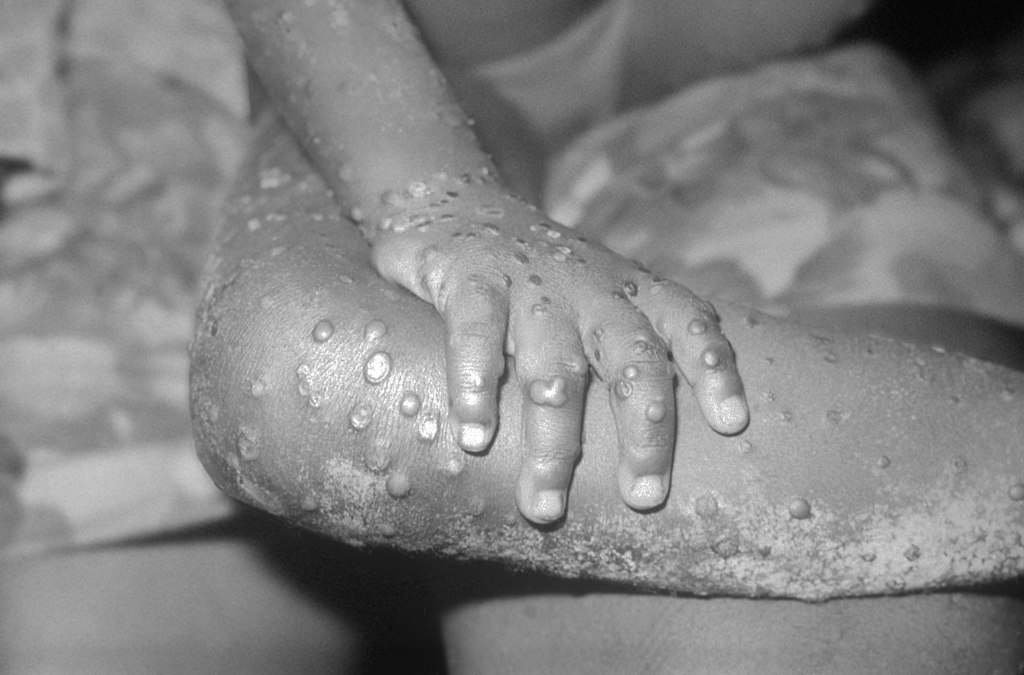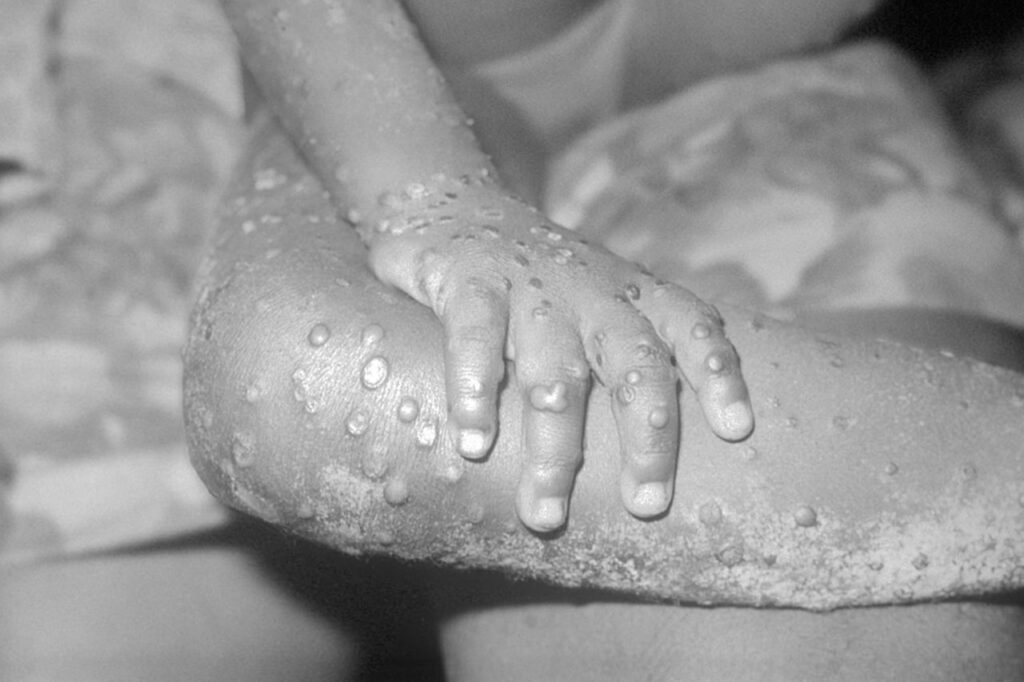
Article by Lalita Panicker, Consulting Editor, Views and Editor, Insight, Hindustan Times, New Delhi
Congo will receive the first vaccine doses to address its mpox outbreak this week from the United States, the country’s health minister said last week, days after the World Health Organization declared mpox outbreaks in Africa a global emergency. https://apnews.com/article/congo-mpox-vaccine-united-states-emergency-8490a15ed4937bfab9477529302f0469
Mpox cases have been confirmed among children and adults in more than a dozen African countries, and a new form of the virus is spreading. Few vaccine doses are available on the continent.
Congo has the vast majority of the mpox cases and currently needs 3 million vaccine doses. The U.S. and Japan have offered to donate vaccines, Health Minister Roger Kamba told journalists.
The WHO has reported over 17,000 mpox cases and over 500 deaths worldwide this year. More than 96% of all cases and deaths have been in Congo, whose health system has long struggled to contain disease outbreaks over the country’s vast area and poor infrastructure. Children under 15 account for more than 70% of the cases and 85% of deaths in Congo.
Scientists are also concerned by a new version of mpox in Congo that might be more easily transmitted. Last week, Sweden reported its first case of the new version.
////
Is the mpox virus spreading rapidly in the Democratic Republic of the Congo (DRC) and neighbouring countries deadlier than the variant that exploded across the globe two years ago? Is it more transmissible? How to square reports that the virus is now transmitting sexually in the DRC with the fact that the majority of cases there have been in children? https://www.science.org/content/article/confused-about-mpox-outbreaks-here-s-what-s-spreading-where-and-why
The situation is unusually complex because it essentially involves three epidemics happening at the same time, each with a different virus variant, in different locations and populations, and with different modes of spread. ScienceInsider talked to mpox researchers to help bring some clarity.
The recent media attention has focused on spread inside the DRC—the country that had the very first known mpox case in 1970—and into neighbouring countries. In the DRC, a strain named clade I has long spilled over from animal reservoirs, most likely small rodents, to people, sometimes followed by limited spread from human to human. These cases are concentrated in the west and centre of the country and are affecting many kids, who are at high risk of severe disease.
In 2023, however, mpox also started spreading in the eastern DRC, in a region that used to have very few cases. “There is little forest there and contact with bush meat is limited,” says Placide Mbala, an epidemiologist at the DRC’s National Institute of Biomedical Research (INRB). Most of these cases are in adolescents and adults, and transmission is primarily through sexual contact. A paper describing the first known outbreak, in a mining town named Kamituga in South Kivu province, reported that about a third of 108 cases occurred in women sex workers.
The same virus has also emerged in a refugee camp near the city of Goma, where it does not appear to spread primarily through sexual contact, says Jason Kindrachuk, a virologist at the University of Manitoba who co-leads the International Mpox Research Consortium. “In an area where you have essentially no sanitation, no healthcare access, people living in very, very dense populations and in close contact, you have the potential for spread just through regular contact,” he says.
The virus circulating in the eastern DRC differs enough genetically from previously found strains that researchers decided to call it clade Ib, and other strains in the DRC clade Ia. The two clades likely diverged centuries ago but clade Ib was never detected before.
Clade Ib has now also spread to Uganda, Kenya, Rwanda and Burundi, triggering worries about further spread, and travellers from Africa have carried the virus to Sweden and Thailand. “I think we’re going to see Ib popping up in several countries around the world,” says Salim Abdool Karim, an epidemiologist who runs the Centre for the AIDS Programme of Research in South Africa.
The third epidemic started in Nigeria. That country and others in West Africa have seen occasional spillover of a virus termed clade II from animal reservoirs to humans as well. In 2014, one such event likely resulted in sustained human-to-human transmission in Nigeria, some of it through sexual contact, that wasn’t recognized until 2017, as a Science investigation into the early years of the outbreak showed. The variant in this outbreak, named clade IIb, is still circulating in Nigeria and also sparked the global mpox epidemic that began in May 2022 and that affected primarily gay men and their sexual networks. So far, around 100,000 people in more than 100 countries have been sickened.
Cases in the global outbreak dropped sharply after a couple of months, likely due to vaccination of those most at risk, immunity in those who became infected, and—at least at the peak of the outbreak—changes in sexual behaviour. But the epidemic hasn’t ended. In June, for example, there were 100 cases in Europe and 175 in the Americas. South Africa has reported 24 cases so far this year, including three deaths, Abdool Karim says. All were men who have sex with men.
////
Gauging the scope of this summer’s COVID-19 outbreak is difficult because most countries have stopped routine reporting of cases. But wastewater testing for SARS-CoV-2 genes still offers an indicator. Data collected by the U.S. Centres for Disease Control and Prevention (CDC) show that in the United States, virus levels on 10 August were at their highest point since 13 January and still climbing. www.science.org/content/article/why-covid-19-surging-again-and-do-shots-still-make-sense?
Other countries reported similar summer spikes in waste-water. In the United Kingdom, the percentage of polymerase chain reaction tests that came back positive for SARS-CoV-2 peaked on 14 July at a level last seen in October 2023.
The two main factors in the ebb and flow of SARS-CoV-2 are the emergence of new viral variants that escape immune responses, and waning immunity gained from previous exposure to the virus and vaccines. It’s “really hard” to disentangle the two, says Sam Scarpino, a computational biologist at Northeastern University who specializes in analysing complex systems. But studies suggest waning immunity is less of a problem than the virus’ shapeshifting abilities.
The SARS-CoV-2 variants circulating today are all members of a strain called Omicron, first identified by South African researchers in November 2021. The virus has evolved a great deal since then, most notably with the emergence in August 2023 of BA.2.86 and its descendant JN.1. Those lineages differ from previously circulating Omicron strains by more than 30 mutations in the viral surface protein known as spike, allowing the variants to “escape” existing immunity.
Research shows most people in the U.S. still have strong antibody and T cell responses against SARS-CoV-2, though they may not be strong enough to prevent illness or slow spread.
For example, a study in the 11 July issue of Nature Communications showed that among some 55,000 people in New York City whose blood has been tested since the start of the pandemic, more than 90% by 2022 had antibodies to the virus, which persisted at moderate to high levels through the last sampling of participants in October 2023. But JN.1 and subsequent variants have broken through that immunity, says Viviana Simon, a virologist at the Icahn School of Medicine at Mount Sinai and lead author of the paper.
That memories of the pandemic have receded, says University of Oxford epidemiologist Christopher Dye. The public has “no appetite” for any restrictions that would slow transmission, he says, and few people still wear masks. “Many people are not particularly bothered about getting it, and they’re not bothering to test,” Dye says.
Are severe disease and deaths from COVID-19 declining?
Yes—they have been for several years. In the U.S., COVID-19 deaths peaked at nearly 26,000 a week in January 2021, the month a wide rollout of COVID-19 vaccines began. U.S. hospitalisations reached a peak 1 year later at 35.4 per 100,000 people, after the highly transmissible Omicron had burst onto the scene, causing record numbers of infections. During the current surge, the U.S. is seeing about 600 deaths a week, and only four people per 100,000 are hospitalized each week. Similar trends have occurred globally.
“We’re much better off now than a few years ago. But obviously, where we all want to be is to not get sick anymore, and so this summer has definitely been disappointing,” Crotty says. COVID-19 “can be quite a nasty disease still,” Dye adds. “And then there’s the question of Long Covid, which people are still not thinking hard enough about.”
In June, the U.S. Food and Drug Administration advised vaccine makers to manufacture boosters based on JN.1 and, “if feasible,” its descendant KP.2, which is now circulating widely. The shots should be available next month. But newer strains will likely circulate this fall, and Ira Longini, a biostatistician at the University of Florida, says people should not expect the boosters to protect them from infection—though he believes they will reduce the risk of severe disease for people who haven’t had COVID-19 or been boosted recently.
Andersen, however, advocates a booster for anyone who hasn’t had a vaccine or an infection in 6 months. “I do think that people are looking at this a little too casually,” he says. “This is not a benign virus. Even if you don’t end up dying, it’s not great being sick and infecting others, and the potential effects of Long Covid are real.”
////
U.S. regulators approved updated COVID-19 vaccines last Thursday, shots designed to more closely target recent virus strains — and hopefully whatever variants cause trouble this winter, too.
With the Food and Drug Administration’s (FDA) clearance, Pfizer and Moderna are set to begin shipping millions of doses. A third U.S. manufacturer, Novavax, expects its modified vaccine version to be available a little later.
“We strongly encourage those who are eligible to consider receiving an updated COVID-19 vaccine to provide better protection against currently circulating variants,” said FDA vaccine chief Dr Peter Marks. The Centres for Disease Control and Prevention (CDC) has recommended this fall’s shot for everyone age 6 months and older.
While most Americans have some degree of immunity from prior infections or vaccinations or both, that protection wanes. Last fall’s shots targeted a different part of the coronavirus family tree, a strain that’s no longer circulating — and CDC data shows only about 22.5% of adults and 14% of children received it.
Skipping the new shot is “a hazardous way to go,” because even if your last infection was mild, your next might be worse or leave you with long COVID symptoms, said Dr Robert Hopkins Jr. of the National Foundation for Infectious Diseases.
This fall’s vaccine recipe is tailored to a newer branch of omicron descendants. The Pfizer and Moderna shots target a subtype called KP.2 that was common earlier this year. While additional offshoots, particularly KP.3.1.1, now are spreading, they’re closely enough related that the vaccines promise cross-protection. A Pfizer spokesman said the company submitted data to FDA showing its updated vaccine “generates a substantially improved response” against multiple virus subtypes compared to last fall’s vaccine.
The CDC says anyone who recently had COVID-19 can wait three months after they recover before getting vaccinated, until immunity from that infection begins to wane.


